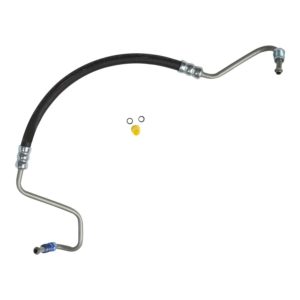Lula Lake and Falls
Lula Lake is located on Lookout Mountain near the Tennessee Georgia border. Old postcards indicate that this beautiful lake and water fall have been a popular tourist destination for decades.
There is a old rail road grade that makes the main trial through the property. This railroad was apparently used to log off the area in years past. The delicate environment of the brow was ravished by the logging operations so the land was sold cheap over the years.
Now the Lula Lake Land Trust has taken over the area to preserve the rich natural beauty of the area. They open the area to the public only two days per month to preserve it.
The narrow road in is slightly rugged and we were glad we were in our 4wd Suburban and wished for our Jeep in a few spots. However, we never actually had to engage 4wd, it was just nice to know it was there.
At the bottom of the hill is a large grassy parking lot. There was a blue tent set up and we were greeted by a friendly person with maps of the park and he was happy to answer any question we might have. He suggested a couple of different paths we might take around the maze of trails.
We chose to walk down the gravel road on the old rail road grade as we wanted to see the lake and water falls. We left the road about halfway there to take a trial that paralleled the road on the other side of the creek. This involved crossing Rock Creek but there were plenty of stepping stones to make it a dry crossing. The children with us used this time to cool off and play in the water.
This trail was actually an old road as well. I sure wish I could explore the area in my Jeep. The creek crossing would have been really fun in the Jeep. Unfortunately they do not allow motorized vehicles on the trials. They do allow bicycles however and the park is dog friendly.
We hiked thought the woods until we intersected the creek again. Here the gravel road has a nice new bridge to cross the creek at the top of the first falls. This is really a cascade into Lula Lake. The rail road grade made a huge cut through the rock at this point so there are steep rock walls on either side of the road after it cross the bridge.
The Trust has added picnic tables and grills to a wide spot they have created overlooking the lake. The lake was much smaller than I expected form the pictures. It is very pretty however with eh falls cascading down into the still pool. I have heard estimates of the depth form 20 to 40 feet. I have heard stories of it being a popular place for scuba diving in years past but swimming or even wading is prohibited now.
Continuing down the path for a few hundred more yards we found the over look to the main falls. This is a huge water fall that drops over an under cut rock. There is a large cave or rock shelter under the falls.
The trail down to the base of the falls is steep and treacherous. There are some cross ties set in the dirt but they seem to be more for erosion control that for steps. Expect a difficult climb down the steep hill to access the bottom of the falls.
The climb is well worth the effort however. At the bottom the trail opens up into the rocky creek bottom.
When we visited it started to rain just as I made it to the bottom. As I hurried across the exposed rocks to the shelter of the overhang, I slipped on one of the polished slabs of rock. The rocks are very slick when wet. I finally made it under the over hang and we waited out the storm with a dozen or so other visitors. There is a large cave that I did not explore as it was filled with more slick rocks and debris that had washed in from the creek.
We enjoyed the view of the back side of the falls while we waited out the storm. The children with us enjoyed playing on the rocks and in the water.
The climb back up the hill is really tough. I had to lift the smallest child that was with us as the steps were too high for him to negotiate. We were all pretty worn out by the time we made it back to the gravel road.
We elected to save the bluff trail and other side trips for another visit. We hiked the gravel road back to the parking area and were happy to be back in our trusty Suburban.
The road out has one steep climb that some cars seemed to be having trouble with. However the climb is paved and our truck had no trouble at all.
I look forward to returning and hiking more of the trails to see more of what the park has to offer. The limited opening schedule may prevent me from going back right away however.
For more info about the area and to see the opening schedule see http://www.lulalake.org









